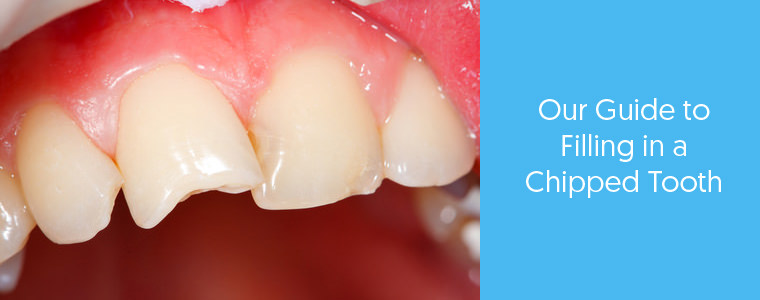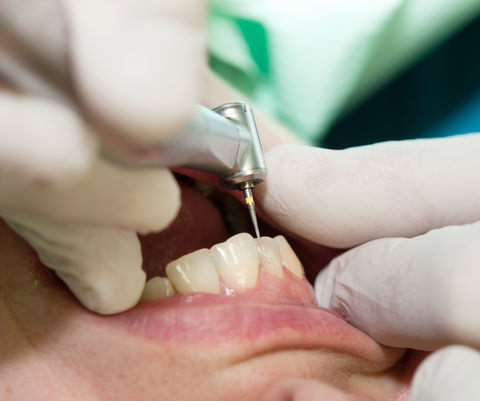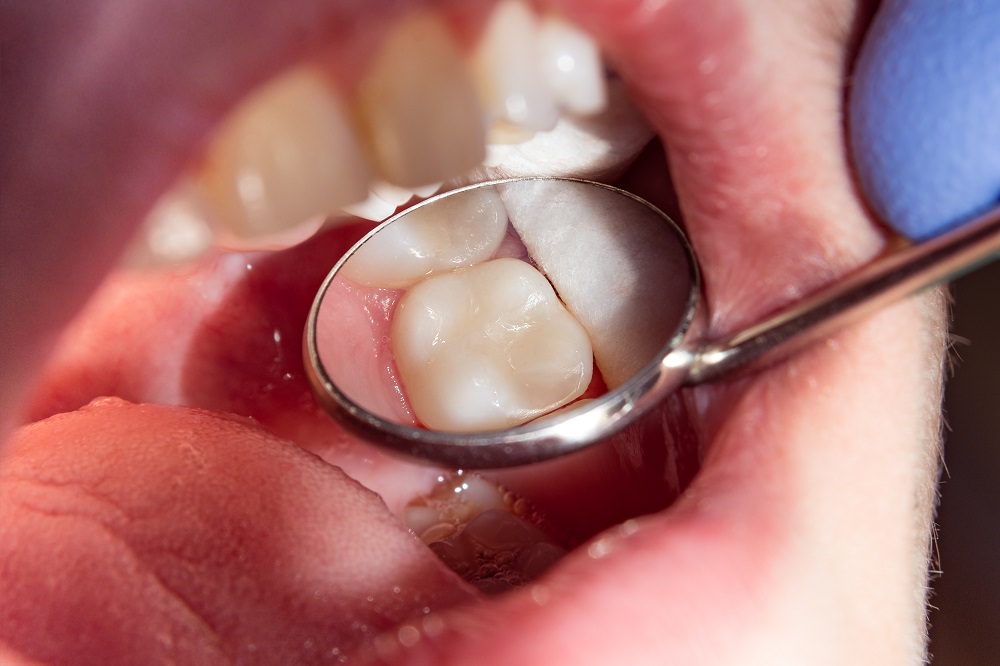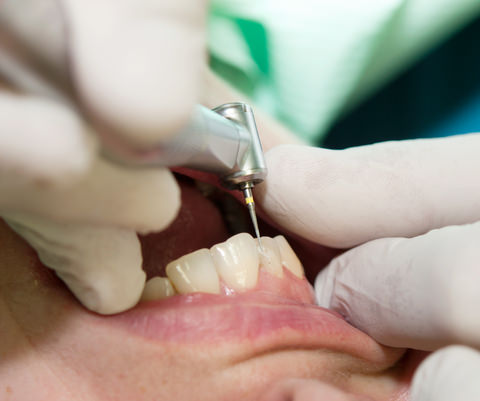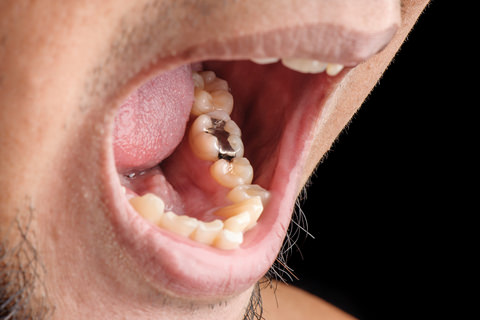How to Fill a Chipped Tooth?
The most common line of defence against a chipped tooth is what’s known as a dental filling.
So, what exactly is a dental filling, and how does it protect against a chipped tooth?
There are a few different types of materials, the most common being white tooth-coloured composite, and silver amalgam, that can be used to fill a chipped tooth.
Lasting anywhere from 5 – 15 years, dental fillings help to fill a void and prevent further damage to already impaired teeth.
Many people are worried about the possibility of the procedure hurting, or the way that a filling may make them look afterwards. But there are no worries regarding receiving fillings.
It’s highly important to book a dentist appointment immediately after chipping a tooth – and rest assured, there is nothing to stress about, there is more to smile about!
Who Can Fix a Chipped Tooth?
Book an appointment with your dentist as soon as possible.
If you do not fix a chipped tooth straight away, it could worsen – your tooth could become further damaged, infected, or you could even possibly end up losing your tooth altogether.
So please, book an emergency appointment with your dentist to resolve the situation immediately.
Is it Normal for Teeth to Chip?
Chipped teeth are the most common dental injuries – it is very likely that it may happen to you at least once during your lifetime.
This is despite the fact that the enamel that covers the tissue on your tooth is the hardest, most mineralised tissue in the body – unfortunately, even its strength has its limitations.
Activities such as falling, using your teeth to open packages (something that should never, ever be done!), suffering a hit to the face, or biting down on something hard such as ice or candy, especially if the tooth already has some form of decay, can cause your tooth to chip.
If you do have a serious dental accident, find out how to deal with a dental emergency in a recent post.
How Long Does it Take to Fill a Chipped Tooth?
This does depend on the severity of the damage – for example, if you have only broken off a small piece of enamel, the repair can be done in one dental visit.
However, the process generally tends to go as follows;
• A local anaesthetic is used to numb the area.
• Your dentist will remove any decayed / structurally unstable sections of the tooth.
• Once your dentist is happy with what they see, they will begin the “filling” procedure.
• Your new tooth is prepared as per the material that was chosen by shaping to the filling area, and left to be cured, hardened and set.
The whole process should take between 30 – 60 minutes.
Tooth Filling: Does it Hurt?
Prior to the procedure being performed, a local anaesthetic is used to numb the teeth, gums and surrounding skin, which helps you to avoid any pain that you may feel whilst the filling is being implanted.
All you may feel is slight pressure whilst the dentist drills away the decay.
After the procedure, your mouth may remain numb for a few hours, and then you may begin to feel some tingling and sensitivity – your dentist may give you some pain relievers that help to ease any soreness.
For up to a few weeks afterwards, you may experience slight pain and sensitivity to hot and cold foods, air temperatures, and the pressure of biting whilst eating, but this will subside with time.
Just be sure to keep up with your oral care routine!
How Will a Dental Filling Look?
There are many materials that can be used to fill a tooth – depending on your generation, you may have silver or even gold.
However, white, tooth coloured fillings, also known as composite fillings, are the most commonly used type of fillings in recent years.
This is as some people no longer like the look of the silver amalgam fillings – they may find it embarrassing to have a darker filling that is obviously noticeable – for example, the filling can be seen by others when you open your mouth to laugh.
Composite fillings were designed to match the shade of your own teeth and are basically unnoticeable, so your smile is as natural as possible – now, isn’t that something to smile about!
How Long do Dental Fillings Last?
Unfortunately, a dental filling cannot be guaranteed to last for life.
The lifespan of your dental filling depends not only on what type of material you choose to fill the chipped tooth – some last longer than others – but also how it’s used, and how you care for your teeth afterwards.
However, generally speaking, gold fillings last on average from 15 – 30 years, silver amalgam fillings 10 – 15 years and white composite fillings 5 – 7 years.
What is the Best Material for Tooth Fillings?
Dentists are still yet to decide and yours may talk you through the process so you can decide for yourself.
The advantages of the two most common types of materials used today are below;
White Coloured Composite Fillings
• Far more aesthetically pleasing – these fillings are designed to match the shade of your teeth, making them basically invisible inside your mouth.
• Bond to the tooth, which restores the majority of the original strength of the tooth – this makes it far less likely to chip again in future.
• If the bonding to the tooth remains intact, the fillings will not become leaky.
• Require less drilling, meaning more of your healthy tooth can be kept intact and the size of the filling can be significantly smaller.
• Less sensitive to hot/cold temperatures.
• Mercury-free (unlike silver amalgam which is approximately 50% mercury – a controversial topic and one that is considered by some researchers to be toxic).
Silver Amalgam Fillings
• Generally, less expensive – the materials used are less expensive, and it is a faster and easier procedure for your dentist to perform.
• Not all dentists know how to place white composite fillings – it is not something that is taught in all dental schools, and as such, some dentists have to complete post-graduate training if they wish to become qualified in this area.
• Silver amalgam filling by itself is a strong material (although it does decrease the strength of your tooth).
• Being an older technique than mercury-free fillings, some dentists believe that they are more reliable – and they do last up to 8 years longer than composite fillings.
Can I Fill a Chipped Tooth Myself?
That’s a strong NO!
However, please ensure you do some self-care processes whilst waiting for your dental appointment.
If in pain, take over the counter pain medication such as Panadol.
Still in pain? Apply an ice pack indirectly on the affected area – this will help reduce any swelling around the area.
Rinse your mouth with salt water or just warm water – this too will help reduce swelling and remove any food particles that may be getting stuck due to the chip.
Please eat soft foods and avoid biting down on the chipped tooth – trust me when I say, you’ll feel it if you do!
If the break has created a sharp, jagged edge of your tooth, you could always try covering it with a piece of paraffin wax or sugarless chewing gum (be careful not to swallow it) – this will stop the tooth cutting the inside of your lip, cheek, or your tongue.
But whatever you do, get yourself to the dentist as soon as possible!
Can I Fix a Chipped Tooth Without Going to the Dentist?
Once again, no! A chipped tooth needs to be filled, otherwise, it can become further damaged or infected, and you very well could end up losing it altogether.
This is because the pulp will become damaged to the point where it will no longer be capable of healing itself.
Even if you do not lose the tooth, the damage will create an amount of sensitivity that the pain whilst chewing will be immense, and over time the tooth may begin to hurt all by itself.
So please, book yourself a dentist appointment.
Conclusion
A chipped tooth is a very common issue seen by dentists, and something most likely to occur to you within your lifetime.
When it does happen, please do not be afraid to book a dentist appointment, and book it immediately!
Due to the local anaesthetic, the dentist will use to numb the area, the procedure will not hurt.
Afterwards, you may experience some pain and sensitivity, but your dentist may give you painkillers to help you deal with this, and these feelings will also subside with time.
It is a much wiser idea than not attending a dentist at all – the tooth will simply not fix itself, in fact, if it is chipped and you do not get your tooth seen to as soon as possible, it can become further damaged, infected, and you may end up losing it altogether.
There are different types of materials that you can choose to use for the filling, all of which have their different advantages, but the most commonly used in recent years is what is known as the white, tooth-coloured composite fillings.
These were designed to match the shade of your teeth, meaning that the fillings are basically unnoticeable… now isn’t that something to smile about!
Have you had a good or bad experience with a chipped tooth?
By Dr. V
Created at April 23, 2019, Updated at January 25, 2025


